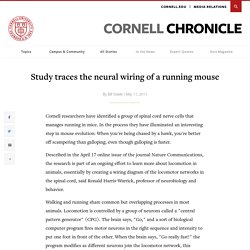

Piano stairs - TheFunTheory.com. Saudade. Saudade (European Portuguese: [sɐwˈðaðɨ], Brazilian Portuguese: [sawˈdadi] or [sawˈdadʒi], Galician: [sawˈðaðe]; plural saudades)[1] is a Portuguese and Galician word that has no direct translation in English.

It describes a deep emotional state of nostalgic or profound melancholic longing for an absent something or someone that one loves. Moreover, it often carries a repressed knowledge that the object of longing may never return.[2] A stronger form of saudade may be felt towards people and things whose whereabouts are unknown, such as a lost lover, or a family member who has gone missing. Saudade was once described as "the love that remains" after someone is gone.
Saudade is the recollection of feelings, experiences, places or events that once brought excitement, pleasure, well-being, which now triggers the senses and makes one live again. In Brazil, the day of Saudade is officially celebrated on 30 January.[3][4] History[edit] Origins[edit] Definition[edit] Elements[edit] Music[edit] What Mimicking One's Language Style May Mean About the Relationship. Oct. 4, 2010 AUSTIN, Texas — People match each other's language styles more during happier periods of their relationship than at other times, according to new research from psychologists at The University of Texas at Austin.

"When two people start a conversation, they usually begin talking alike within a matter of seconds," says James Pennebaker, psychology professor and co-author of the study. "This also happens when people read a book or watch a movie. As soon as the credits roll, they find themselves talking like the author or the central characters. " This tendency is called language style matching or LSM. "Because style matching is automatic," says Ireland, a psychology graduate student, "it serves as an unobtrusive window into people's close relationships with others. " Ireland and Pennebaker tracked the language used by almost 2,000 college students as they responded to class assignments written in very different language styles. Study traces neural wiring of a running mouse. Cornell researchers have identified a group of spinal cord nerve cells that manages running in mice.

In the process they have illuminated an interesting step in mouse evolution: When you're being chased by a hawk, you're better off scampering than galloping, even though galloping is faster. Described in the April 17 online issue of the journal Nature Communications, the research is part of an ongoing effort to learn more about locomotion in animals, essentially by creating a wiring diagram of the locomotor networks in the spinal cord, said Ronald Harris-Warrick, professor of neurobiology and behavior. Walking and running share common but overlapping processes in most animals. Locomotion is controlled by a group of neurons called a "central pattern generator" (CPG). The brain says, "Go," and a sort of biological computer program fires motor neurons in the right sequence and intensity to put one foot in front of the other.
Wired Science. Algae To Eliminate oil Dependency. 10x10x10 ft house. Philosophy. Athene's Theory of Everything. Social Media Revolution. The Pitfalls of Language. The end of Society. Dan Dennett on dangerous memes. TED Talks.